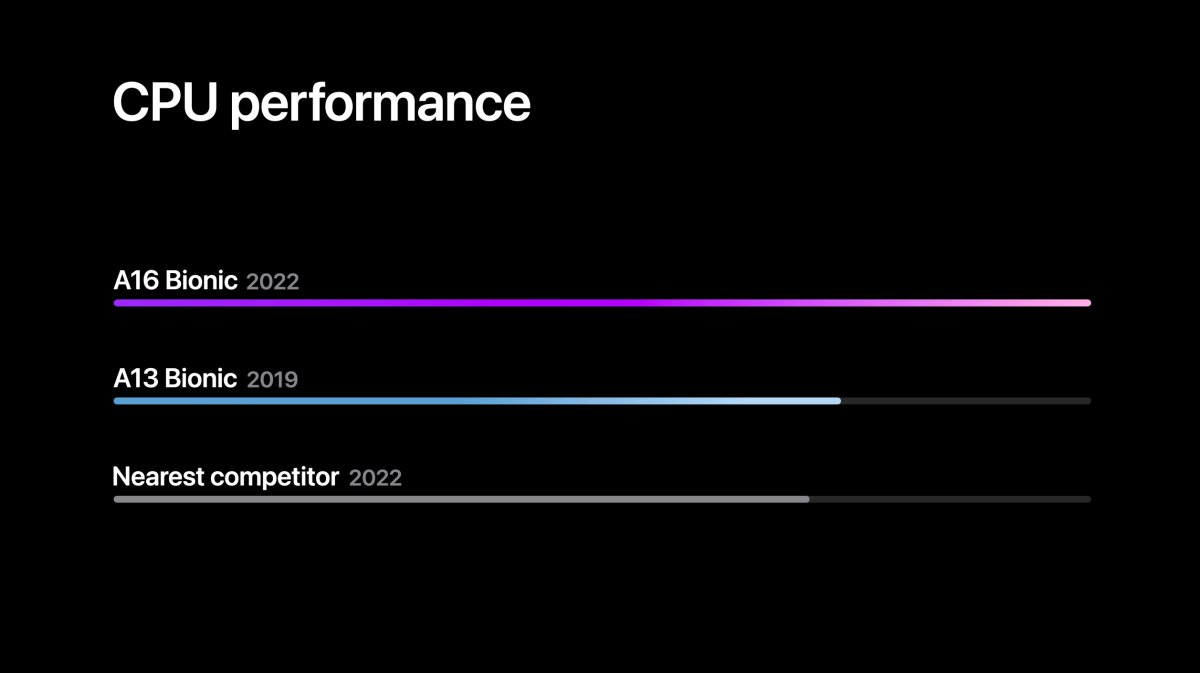Every single yr, Apple ushers in a new A-sequence system-on-chip to pair with the most current iPhones. This year, the enterprise has taken an fully new path. The new A16 processor is reserved only for the “Pro” product iPhones, whilst the standard Iphone 14 models get the same A15 we were launched to very last year (the 5-core GPU variation that was discovered in the Apple iphone 13 Pro designs).
The this-year and very last-calendar year break up is not the only unique thing. The A16 is, extra than common, a somewhat small evolution on the previous SoC. There are a few changes to be sure, but the ordinary consumer is unlikely to observe them. The differences amongst A15 and A16 seem to be comparatively gentle in contrast to Apple’s standard annually cadence.
Before this calendar year, I made some predictions about the A16 that were led by assumptions that absolutely did not all pan out. Though a few things were being accurate, the performance uplift in the A16 is about 50 % of what I predicted, and there are much less major technological advancements seen. Here’s what is new in the A16, and what you can assume from Apple’s very first “Pro-only” A sequence chip.
What is adjusted from A15 Bionic
At 1st blush, the A16 would seem architecturally equivalent to the A15. There are two substantial-general performance CPU cores and four superior-efficiency cores, 5 GPU cores, and 16 Neural Motor cores to operate device understanding and AI algorithms. Just like the A15.
The chip is created on a new “4 nanometer” process from TSMC, in accordance to Apple, building it the to start with this kind of processor in a smartphone. According to Nikei Asia’s teardown, this is a dear improve. The website located that the chip prices “over 2.4 periods extra than the A15 model utilized in the Iphone 13 Pro Max unveiled previous calendar year.” The site studies that Apple is paying out $110 for each and every chip, which has raised the iPhone’s production expenses “to an all-time high.” To its credit, Apple has not increased the price tag of the Iphone 14 Pro types over past calendar year.
It is truly worth noting, on the other hand, that TSMC’s “N4” method is not a 4nm method in the truest sense with TSMC alone even contacting it “an increased variation of N5 technological innovation.” Although it’s a much more highly developed approach than earlier A collection processors, it is not a true up coming-generation silicon manufacturing course of action you are going to have to wait around for the 3nm system subsequent yr for such a point.

The A16 chip is exlclusive to the Iphone 14 Professional,.
Dominik Tomaszewski / Foundry
The transistor count has absent up a several per cent to 16 billion (from 15 billion), and it is very likely that most of that greater funds is expended in the new display screen engine (which manages the Iphone 14 Pro’s display down to 1Hz in often-on display method and can crank it up to 2,000 nits in shiny sunlight), memory controller, and image sign processor.
As for the a lot more typical-purpose pieces of the processor, they look to be only scarcely transformed. The substantial-efficiency CPU cores have the code name “Everest” and can clock up to 3.46 GHz, a roughly 7% boost above the A15’s utmost of 3.24 GHz for its “Avalanche” cores. The large-performance cores are code-named “Sawtooth” and clocked up to 2.02 GHz, which is practically the very same pace the 2.01 GHz of the A15’s 2.01 GHz “Blizzard” cores. Though these cores carry a new title, the architectural changes seem minimal at best, as they really do not supply efficiency exterior the predicted uplift from the enhance in clock pace.
The Neural Motor is even now 16 cores, just as in the A15. Apple claims it performs up to 17 trillion operations for every 2nd, which is roughly an 8% increase about the 15.8 trillion of the A15. I consider it’s likely the similar design and style just clocked a minor greater.
Maybe the most considerable adjust is the switch to LPDDR5 memory, which ought to give 50 percent far more memory bandwidth than the LPDDR4x memory in the A15. Apple in fact made the swap to LPDDR5 in the M1 processor line (on the M1 Professional, Max, and Ultra), which is centered on the A14 chip architecture–the only true shock here is that the organization waited this extended to do it in their Iphone-certain chips. There may be some really precise conditions where a undertaking is fully confined by memory bandwidth on the A15, in which circumstance the A16 ought to accomplish a good deal better.
So at initial blush, we have what seems to be in essence an A15 that clocks greater, with a new display motor and potentially picture signal processor. We have browse studies that there are new safety measures in the processor’s ROM unsurprising, looking at how tricky Apple functions on equally the hardware and software package facet to make their products tricky to hack.
CPU overall performance
Offered that the CPU architecture has not changed a lot, but just runs at a clock speed up to 7 % higher (and with much more memory bandwidth available), we should really count on most CPU benchmarks to exhibit overall performance gains of 10 p.c or significantly less.
A fast glance at Geekbench 5 numbers reveals us that, in fact, optimum one-main CPU functionality appears to have long gone up by close to 8-10 p.c in excess of the A15. Multi-core performance fares a tiny better, but it’s most likely that people tests are extra effortlessly in a position to overwhelm the chip’s caches and would hence get some profit from the increased memory bandwidth.
GPU effectiveness
The A16 Bionic has five GPU cores, just as the greater-conclude A15 does, and I really don’t consider there have been any architectural modifications. But substantial-close 3D graphics tend to be very demanding on memory bandwidth, and I would hope the change to LPDDR5 memory to have a major effect right here. I really do not have any authentic insight into the GPU clock speeds, but it would be realistic to count on that the cores can clock all over 7 p.c increased, just as the significant general performance CPU cores do.
Having a look at one of the most intense 3D graphics benchmarks, 3DMark Wild Lifestyle, overall performance may differ from about 7 % speedier on less complicated modes to around 19 p.c in the “Wild Everyday living Severe Unlimited” test. That’s a superior improvement, and in line with what I would count on from a mild clock velocity raise and massive memory bandwidth raise.
When utilizing the GPU to carry out standard-goal computations, as analyzed in the GeekBench compute score (see earlier mentioned), the effectiveness uplift is in the 7-8 % range.
A15+ would be a far more honest title
There is no question that the A16 is not merely a “binned” version of the A15 (“binning” is when chips that are examined to accomplish better in production are separated and offered as a distinctive product). This is a new chip. But there are no main architectural overhauls here that I can see, just minimal revisions to boost utmost clock velocity and electricity efficiency. This is fewer of a leap about very last year’s model than we are applied to seeing in Apple’s yearly Apple iphone revamp, a actuality that is only underscored by the reality that the regular Iphone 14 designs are nonetheless working with very last year’s A15 whilst still delivering important features like Action Mode, Photonic Engine, and 4K Cinematic method.

Apple
Apple didn’t endorse any unique function of the processor as “new” other than the screen motor (which is demanded to take care of the Apple iphone 14 Pro’s usually-on display and 1Hz refresh amount), and in fact promoted it most directly versus Android telephones and the A13, it’s 3-calendar year-outdated flagship. The efficiency charts just never appear really impressive with a 7-10 per cent general performance bump.
To that stop, I experience like Apple in all probability shouldn’t have specified this chip the A16 moniker. In most means that matter, it’s a tuned-up A15. Even the new “4nm” manufacturing procedure is best described as a modified 5nm method. It is almost certainly unreasonable to assume groundbreaking enhancements each individual 12 months, with entirely new architectures delivering 20% functionality enhancements. The occasional “tune-up” yr is fantastic, specially because Apple has this sort of a commanding lead in smartphone functionality ideal now. But the naming should replicate that, and a title like A15+ or A15 Professional feels like a more sincere illustration of this chip.

